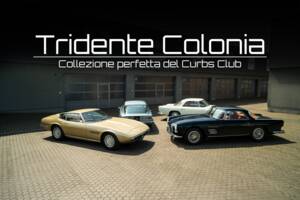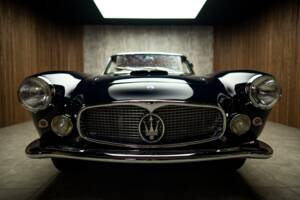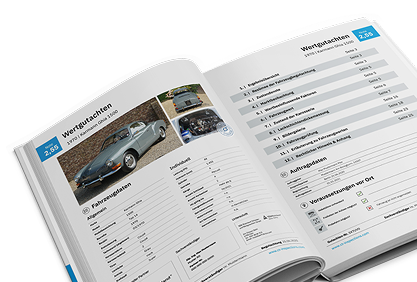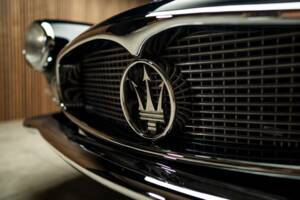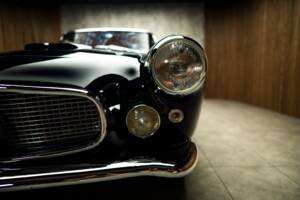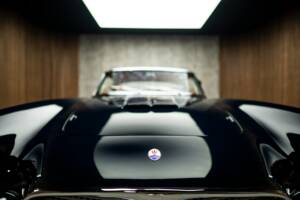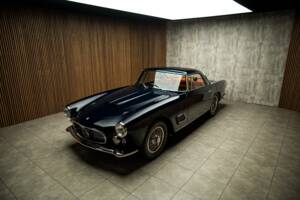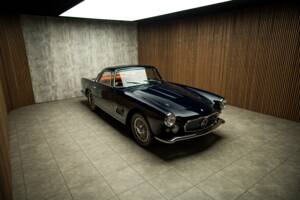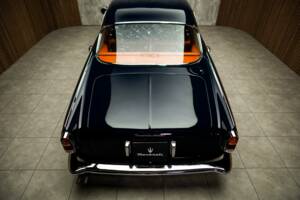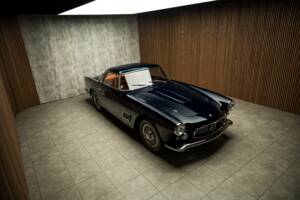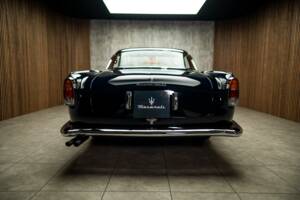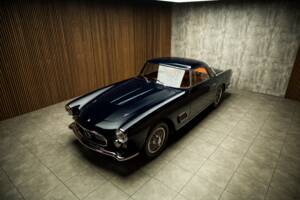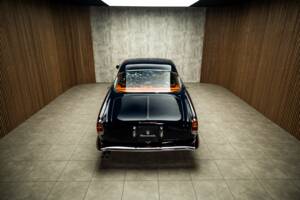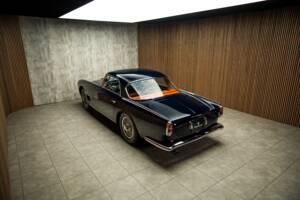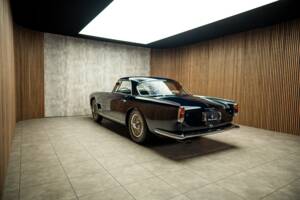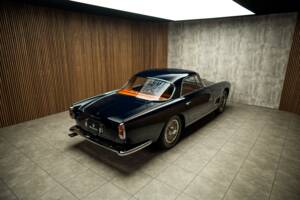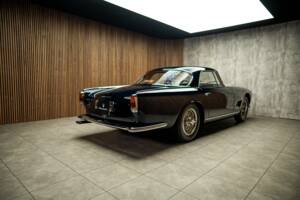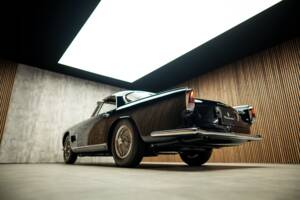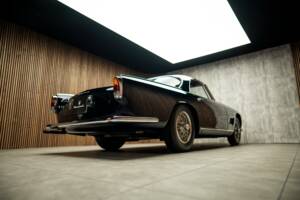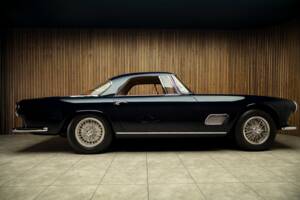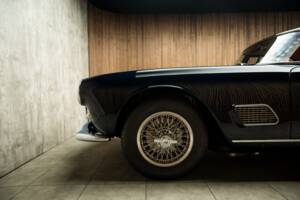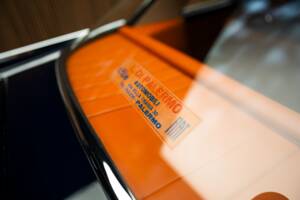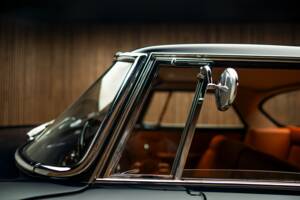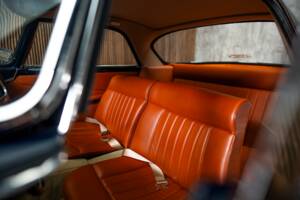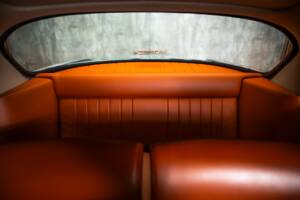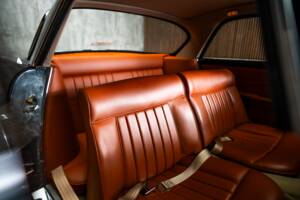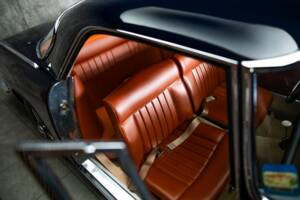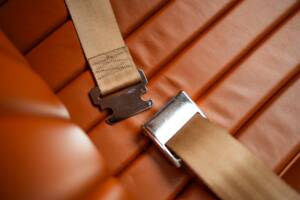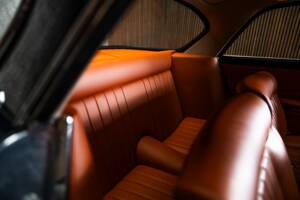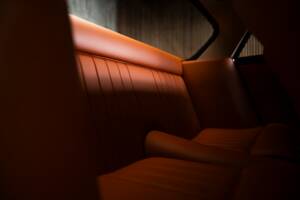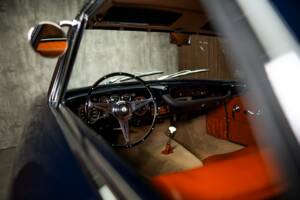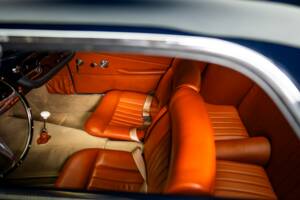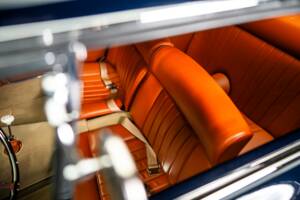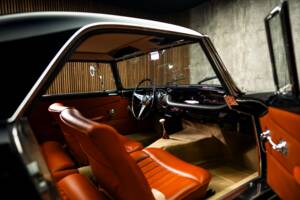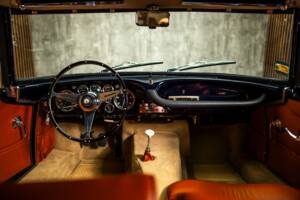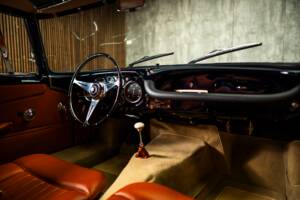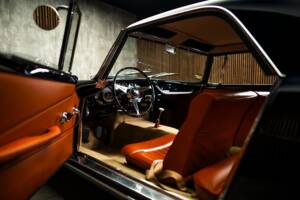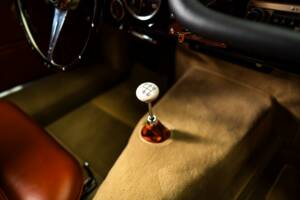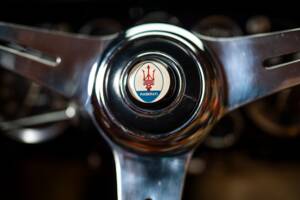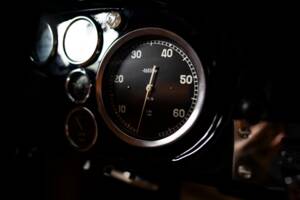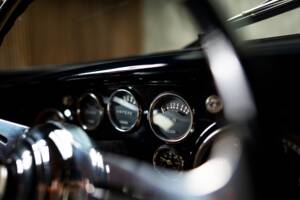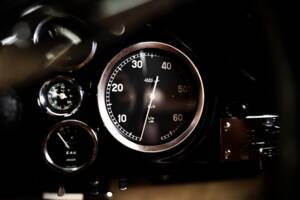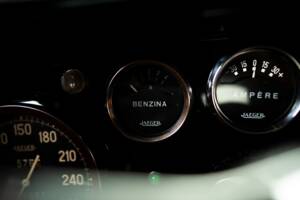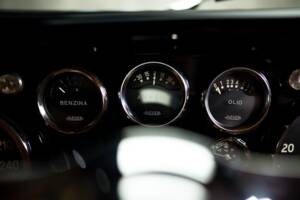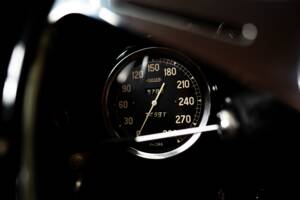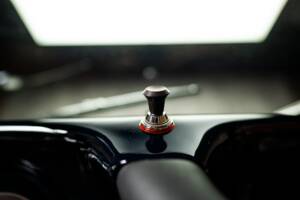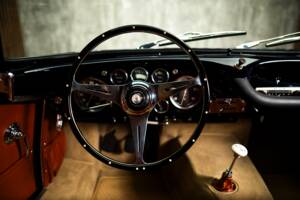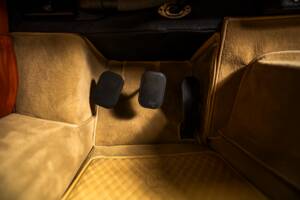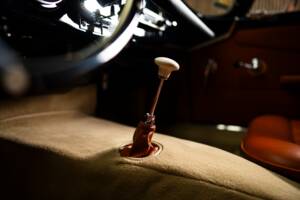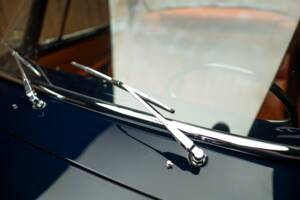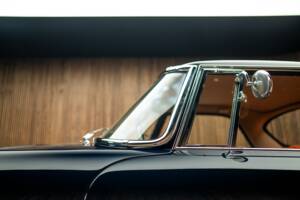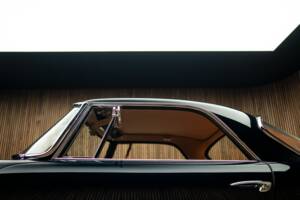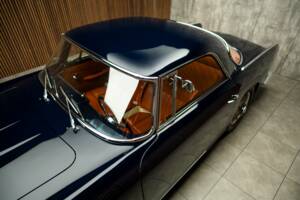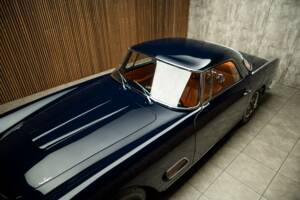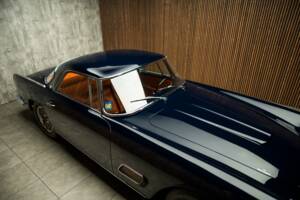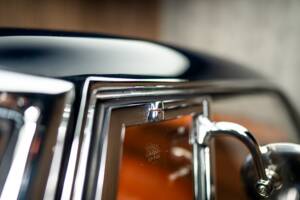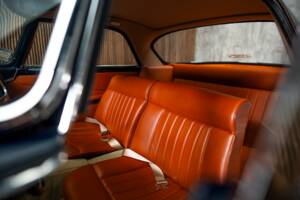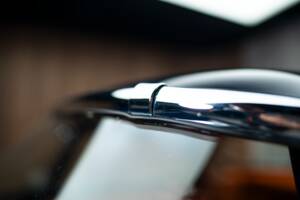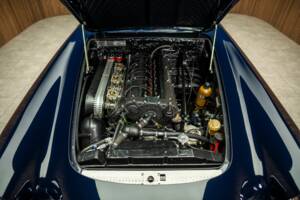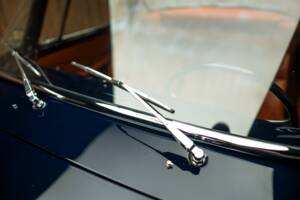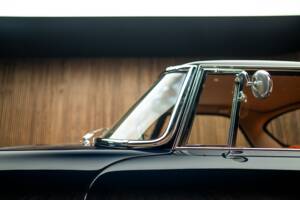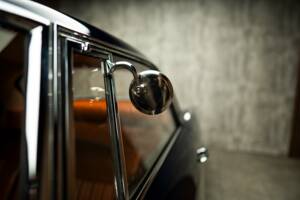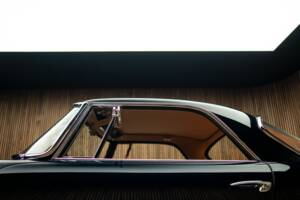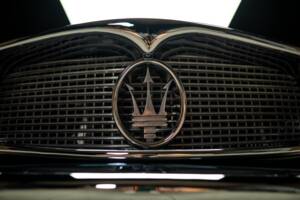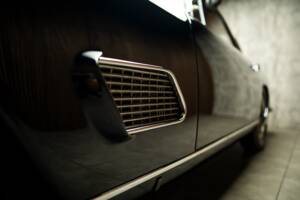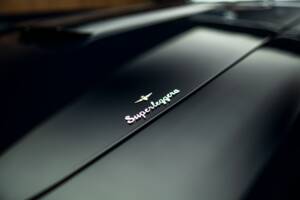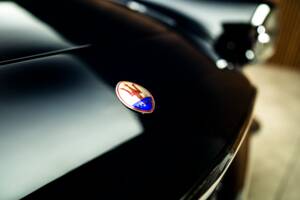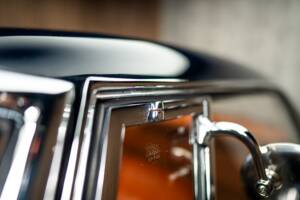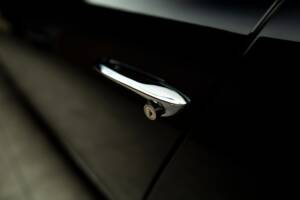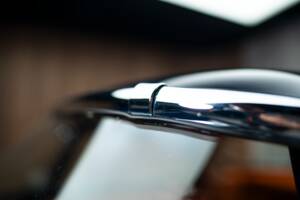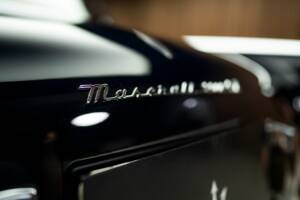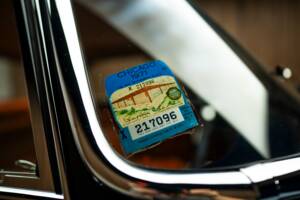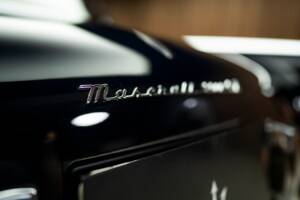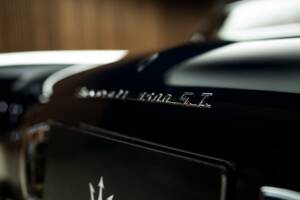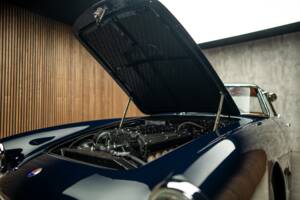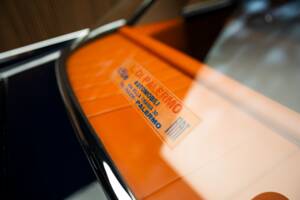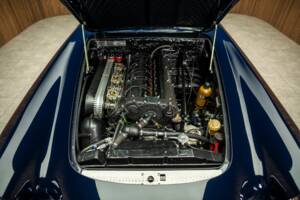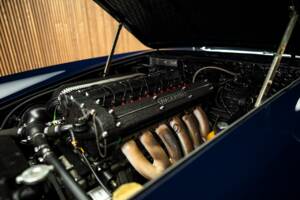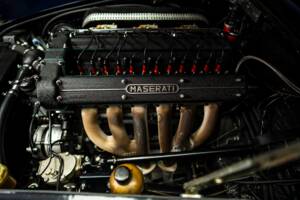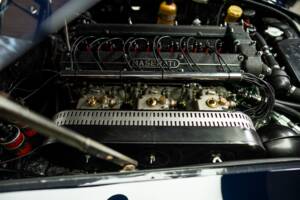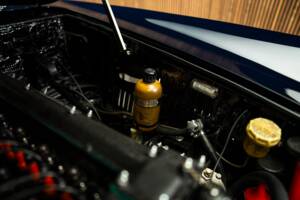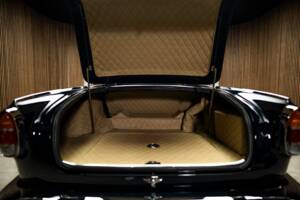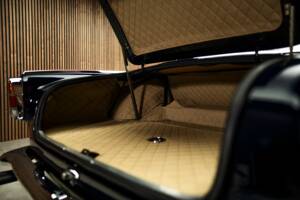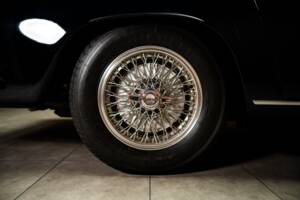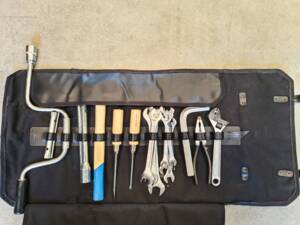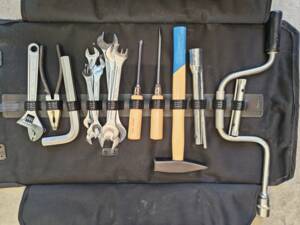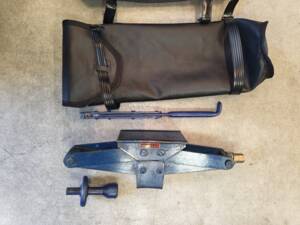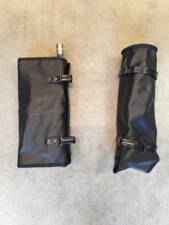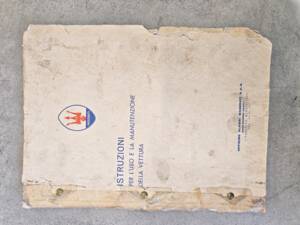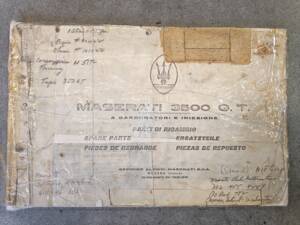1957 | Maserati 3500 GT Touring
Tridente Colonia - Collezione perfetta del Curbs Club
Tridente Colonia - Collezione perfetta del Curbs Club
All services for this vehicle
Description
The Birth of the Gran Turismo
But let's look back first: Maserati, founded in Bologna in 1914, was sold in 1937 by the industrialist Adolfo Orsi. Orsi moved the company headquarters to Modena, and while Maserati achieved racing successes, the company's financial situation remained precarious until the early 1960s. With the A6 and its many derivatives, produced from 1947 onwards, the Italians offered a road-worthy model, but it wasn't until March 1957, when a white Maserati 3500 GT was presented alongside the new Mercedes 300 SL and a Pininfarina-designed Ferrari 250 GT Spider at the 27th Geneva Motor Show, that sales figures began to rise to a level that made series production and financial success possible.
In the mid-1950s, a new segment of sports car buyers emerged. Businessmen, celebrities, and other successful individuals craved fast, luxurious sports cars; they wanted to travel quickly on the ever-improving road network, not to race.
Maserati, or rather, its engineer Giulio Alfieri, quickly recognized this trend and built an elegant two-plus-two seater sports car that combined existing technology with new ideas. And new ideas were essential at a time when Maserati was struggling with serious financial problems.
Naturally, Maserati had looked to its neighbor in Maranello, where the Ferrari 250 GT Gran Turismo was a huge success. They also had a suitable engine in Modena: the 3.5-liter inline six-cylinder from the 350S racing car could be adapted relatively easily. The approximately 220–240 hp of the early versions, fed by three Weber double-barrel carburetors, provided good performance, even though the Maserati, at 1.4 tons, was no lightweight. Initially, the car had a four-speed manual transmission; from 1961 onwards, a five-speed ZF transmission was available.
The 3500 GT was built on a classic tubular frame. The front wheels were independently suspended by double wishbones and sprung by coil springs. The rear axle was a solid axle, sourced from Salisbury Wheels in England – this was one of the main criticisms of the 3500 GT, along with the Girling drum brakes used initially. From 1960, disc brakes were fitted at the front. Compared to the Ferrari 250 GT Coupe, the Maserati was designed for greater comfort. The design, however, was universally praised. At the 1957 Geneva Motor Show, two body styles were on display: one by Allemano and the other by Touring, which was then adopted for series production. Touring was also supposed to build the convertible, but the design looked rather clumsy, so the order went to Vignale, where Giovanni Michelotti designed a beautiful model with an elegant flowing silhouette. By 1964, a total of 1972 examples of the Touring coupe body style had been produced, including the 3500 GTI with manifold fuel injection, which was introduced in 1962. In addition, 245 Vignale Spider models and a few one-off examples by other Italian coachbuilders were built.
Racing technology for the road
The engine, however, was still based on a racing engine. With this 3.5-liter six-cylinder engine, Stirling Moss competed in the Mille Miglia in 1956 and went on to win the Formula 1 championship in 1957. Two overhead camshafts and dual ignition were therefore considered standard features, as were three double-barrel carburetors. With reduced peak power and revs, and with a timing chain instead of gears, the lightweight aluminum engine still delivered a respectable 220 hp at 5500 rpm. In the competitive landscape of contemporary super sports cars, it positioned itself between the Mercedes-Benz 300 SL (215 hp) and the Ferrari 250 GT (240 hp). With a displacement of 3,485 cubic centimeters, the six-cylinder engine was also the largest production engine of its time in Italy. While the engine was developed by chief engineer Giulio Alfieri, the remaining technical components were sourced from external suppliers. The four-speed gearbox (a five-speed gearbox was introduced in 1961) and the rack-and-pinion steering came from ZF, the drum brakes from Gerling, and the differential from Salisbury. This ensured that all components would function reliably even at top speeds of up to 230 km/h, and saved valuable time that would otherwise have been spent on developing these components in-house. The entire technical package was integrated into a tubular space frame with two robust longitudinal beams and exceptionally strong side sills. Unlike a monocoque design, this made the 3500 GT ideally suited for the construction of custom bodywork.
What makes this vehicle special?
The 3500 GT is part of the prestigious Maserati collection "Tridente Colonia - Collezione perfetta del Curbs Club".
This collection is currently offered for sale as a complete package and comprises the following vehicles:
Maserati Ghibli 4700 (Restored to perfect condition)
Maserati Mistral 3700 GTI 2-seater (Pre-production, restored)
Maserati 3500 GT Dark Blue (Pre-production model, restored to perfection)
Maserati 3500 GT White (Unrestored, fantastic and perfectly original condition)
This 3500 GT was built as one of the very first Maserati 3500 GTs in February 1958 and delivered on March 27, 1958 with optional Borrani wire wheels. It originally had a 4-speed gearbox and Girling Alfin drum brakes front and rear. The car was then sold to its first owner in Rome, Italy.
Being one of the very first 3500 GTs ever built, it has many features that indicate a early series hand-built model. For example, the body is approximately 2 cm narrower, the Borrani wheels (RW3421) are unique, resulting in a slightly narrower track, and it also has a slightly shorter wheelbase. The wonderful instruments are still from the Maserati A6, supplied by Jaeger in France. The dashboard features 7 instruments: speedometer, tachometer, fuel gauge, ammeter, oil pressure gauge, oil temperature gauge, and water temperature gauge. A contemporary Autovox radio (non-functional) completes the dashboard. The dashboard of this car is still painted in the body color; later models had a leather-covered upper dashboard. Beautiful chrome sun visors with tinted glass protect from glare. The roof lining is upholstered in beige wool. It also has the early chrome heater controls of the pre-production series. The matching-number engine is still made from or derived from components of the 350F racing engines, such as the cylinder head with water inlets and camshafts with steeper lobes and more aggressive timing. Compared to the later production engine, this engine has more power, revs higher, and has a sportier character. The chassis features wider sills and additional reinforcements. During the disassembly of the vehicle, it became clear how creatively the Italian engineers approached its construction, making changes and improvements as they progressed. The craftsmanship involved in building such a prototype at that time required absolute expertise and demonstrates the highest standards of workmanship, functionality, and design.
In this early example, the seats are mounted lower in the chassis, allowing even tall drivers to sit comfortably.
The steering is more precise and responsive, enabling more accurate handling and a sportier driving experience. Overall, this 3500 GT is more of a sports car than a grand tourer; it retains more of the DNA of the 350 F racing car and the A6 sports car.
At the owner's request, the car was returned to the factory in 1961 to have Gerling disc brakes fitted to the front axle. The Gerling disc brake was first presented at the Geneva Motor Show in 1957 and only entered production in 1960.
The Maserati archives confirmed this, as well as the fact that, also at the owner's request, a 5-speed ZF transmission was supplied and installed by the factory in 1964. Both of these features remain on the car today.
During the restoration, the Maserati was meticulously restored by the best specialists in Europe. It was completely disassembled. The aluminum body was separated from the frame, the chassis was stripped of paint and rust, and rebuilt by master bodywork craftsmen.
Meanwhile, the entire mechanical system was dismantled, cleaned, and expertly restored with the utmost care and expertise. No expense was spared; the entire mechanical system, including the engine, carburetor, transmission (rebuilt at the ZF factory), front and rear axles, suspension/dampers, steering, instruments, electrical system, wiring harness, switches, and much more, was restored to like-new condition. A new, authentic-looking exhaust system was custom-made from high-quality stainless steel and installed. The bodywork was refinished in a high-quality, contemporary Maserati dark blue paint, with perfectly flat panels and gaps that are tighter than ever before. The chrome trim has been meticulously restored and gleams alongside the paint. Combined with the "Pelle Marrone" leather interior (Connolly FG/PAC 1386) and light beige velour carpeting, this creates a classic and harmonious color scheme that perfectly complements the elegance and beautiful proportions of the Maserati. The meticulously documented restoration process took over 4,000 hours. The goal of this restoration was to preserve as much of the car's original character as possible and to create a truly authentic and fully functional Maserati 3500 GT. This goal has been fully achieved. The Maserati drives wonderfully, is a joy to drive, the engine sounds magnificent, and it is easy to operate. Thanks to the masterful workmanship and the use of modern materials and techniques, it is now also a reliable and dependable vehicle.
Thanks to the discreetly installed air conditioning system, this car remains comfortable to drive even on warm summer days, whether for a leisurely drive or a concours event.
The aura of this Gran Turismo is truly captivating. This Maserati is one of the most important vehicles in Maserati's history, a significant model, and therefore a prized possession for any serious Maserati collection.
This car is a rare collector's item and not comparable to an average 3500 GT on the market. This 3500 GT is part of a fantastic collection of other Maseratis, all in comparable condition. Arwed Lange, our sales representative, will be happy to advise you. He will provide you with all the relevant information about these vehicles and invite you to visit our showroom in Cologne.
We hope we have piqued your interest in this exceptional opportunity. Thank you for your interest and we look forward to seeing you soon in Cologne.
Vehicle details
Vehicle data
- Make
- Maserati
- Model series
- 3500 GT
- Model name
- 3500 GT Touring
- Manufacturer code
- Tipo AM101
- First registration date
- 03/1958
- Year of manufacture
- 1957
- Mileage (read)
- 74,591 km
- Chassis number
- Not provided
- Engine number
- Not provided
- Gearbox number
- Not provided
- Matching numbers
- Yes
- Number of owners
- Not provided
Technical details
- Body style
- Coupe
- Power (kW/hp)
- 177/240
- Cubic capacity (cm³)
- 3485
- Cylinders
- 6
- Doors
- Not provided
- Steering
- Left (LHD)
- Gearbox
- Manual
- Gears
- Not provided
- Transmission
- Rear
- Front brakes
- Not provided
- Rear brakes
- Not provided
- Fuel type
- Petrol
Individual configuration
- Exterior color
- Blue
- Manufacturer color name
- 20A44 Blu Scuro
- Interior color
- Brown
- Interior material
- Leather
- Air conditioning
- Yes
Condition, registration & documentation
- Condition category
- Restored
- Has Report
- Report provider
- TÜV
- Rating
- 1
- Condition
- MOT
- MOT until
- 06/2027
- Historical license plate
- Registered
- Ready to drive
- Accident free


